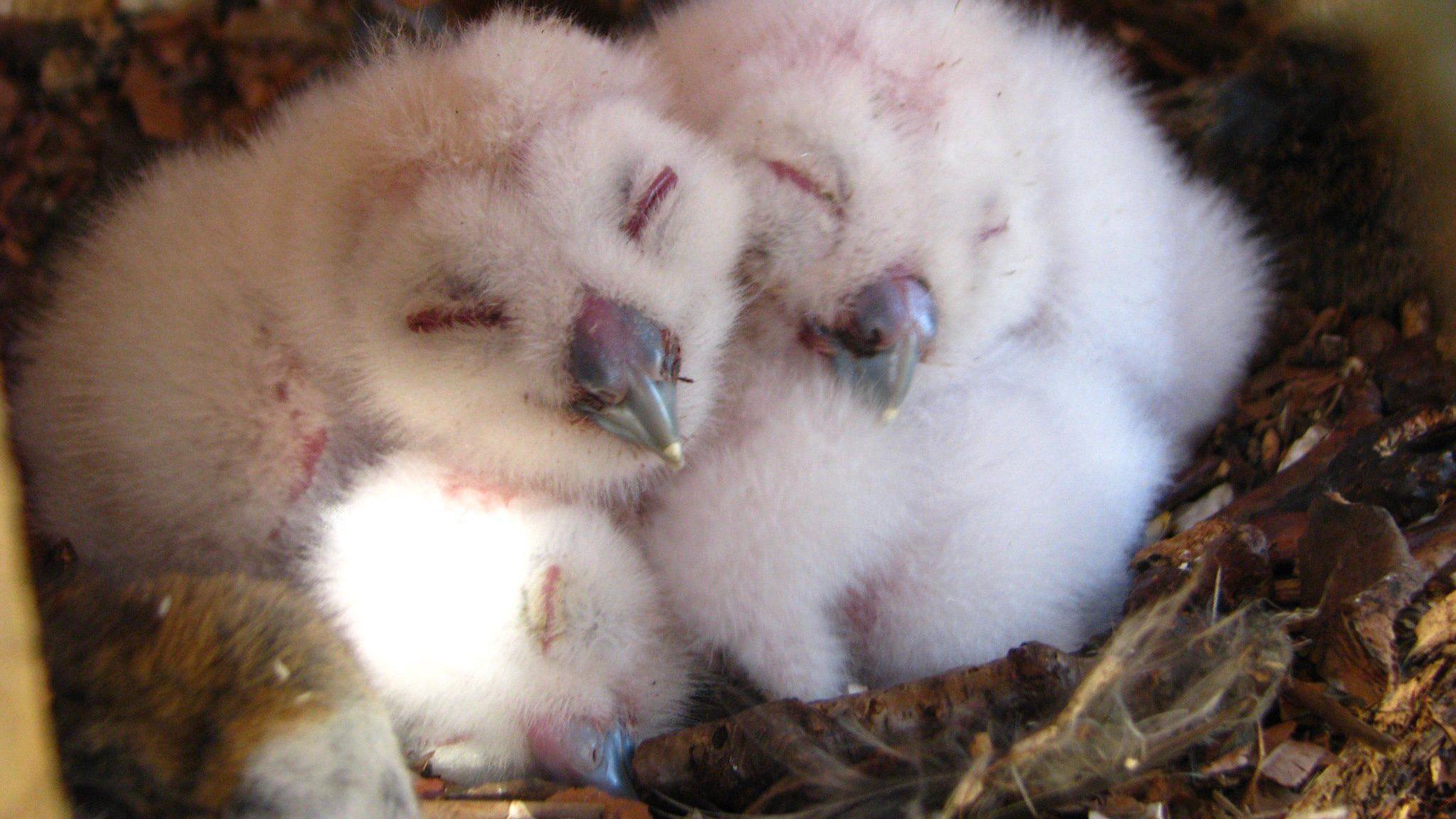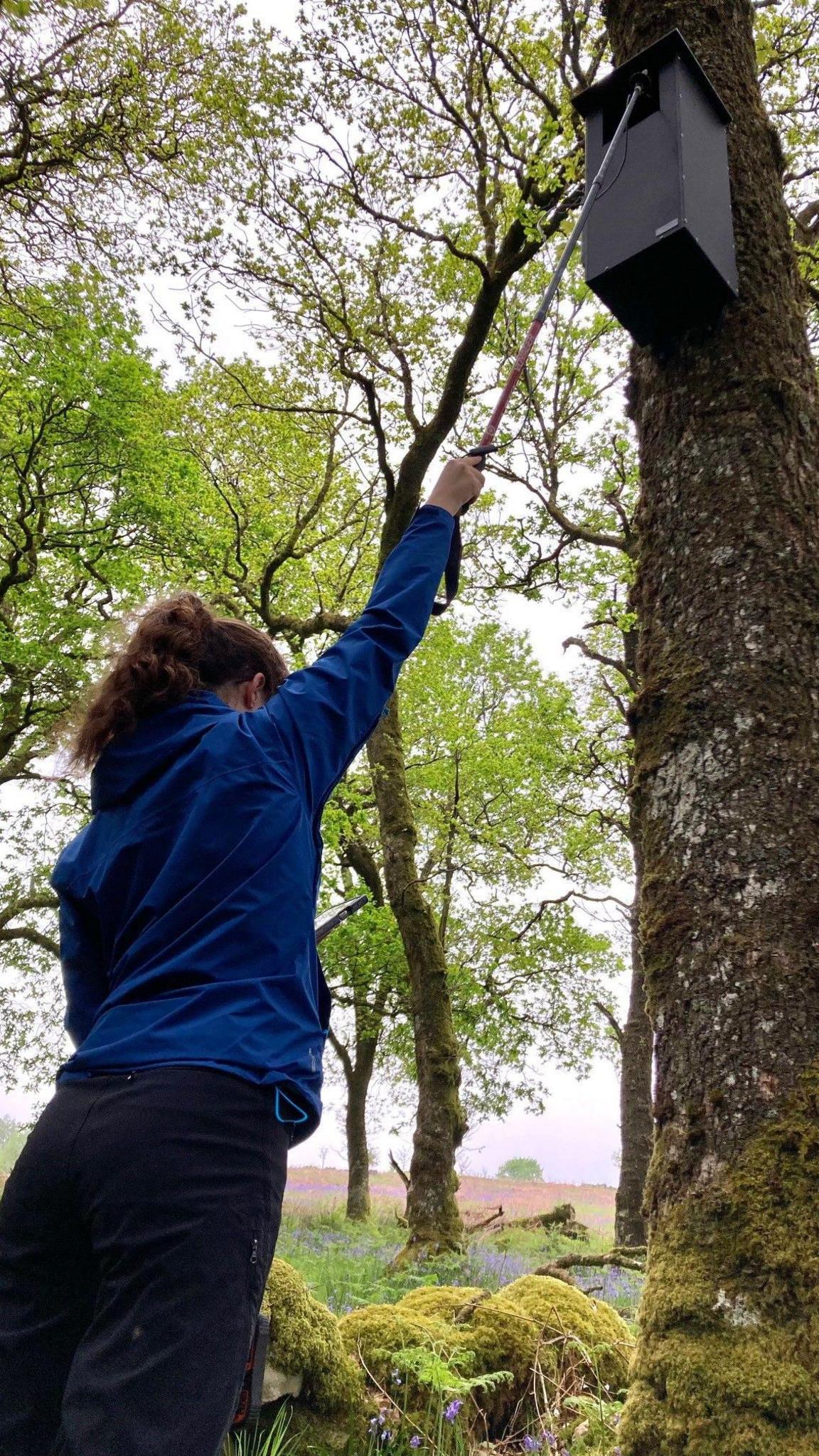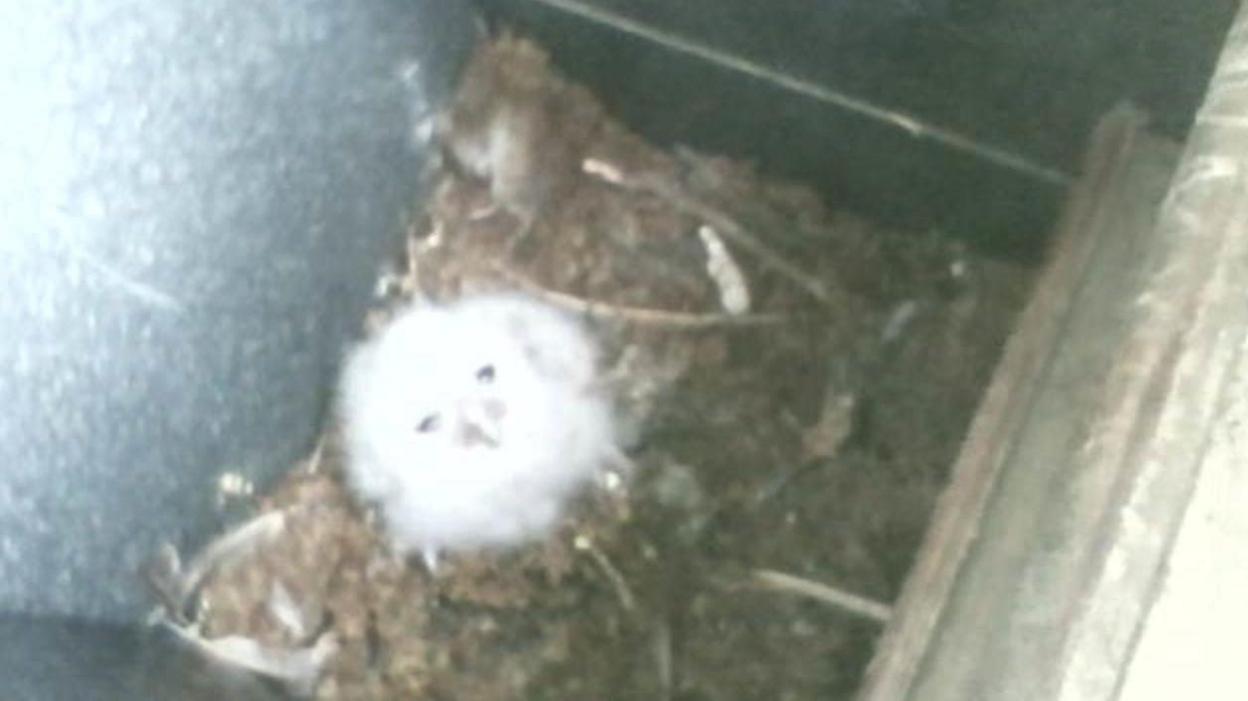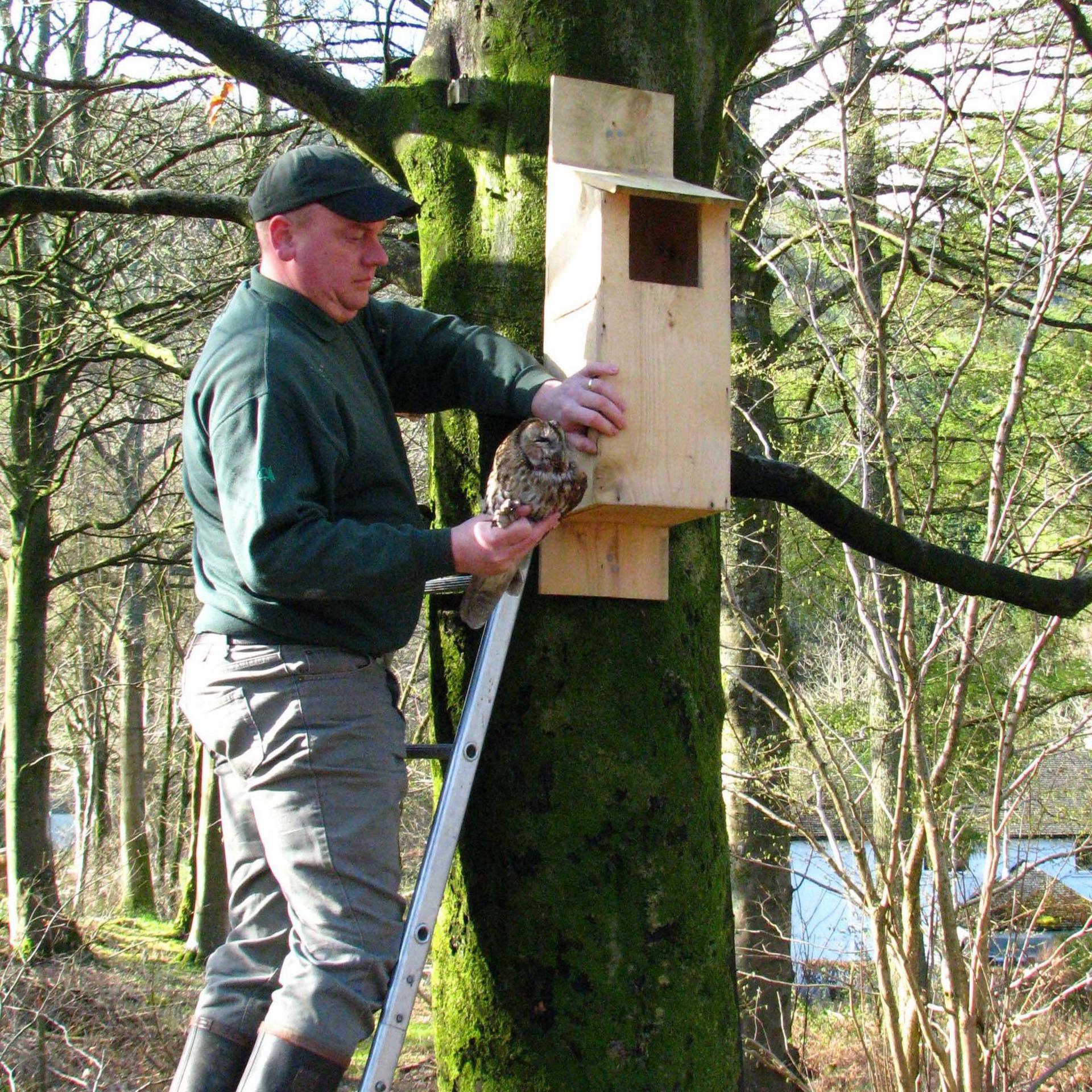Endoscopes help keep tabs on tawny owl chicks

Tawny owls are the most common owl in the UK but remain amber-listed as a species of concern
- Published
Endoscopes are being put to an unconventional use in the Galloway Forest in south-west Scotland.
The medical equipment - usually inserted into the human body to send back video images - is helping to check nest boxes for tawny owl chicks.
By attaching them to the end of a pole, Forestry and Land Scotland's (FLS) environment team is able to link to a mobile phone app and see inside.
It ensures they can check on numbers and their condition without having to disturb the occupants of the boxes.

Using the endoscopes allows checks to be made without disturbing the birds
The months of April and May are when the tawny owls typically brood young chicks.
About 40 nesting boxes have been installed across the site - most of them about three to four metres (10ft to 13ft) off the ground.
By using the endoscope, the team does not have to climb a ladder or take the lid off the boxes.
FLS said the boxes were aimed at providing breeding opportunities that would otherwise be harder to find, because conifer plantations lack suitable, natural, nesting sites like cavities in old trees.

Images from the boxes can be relayed to an app
Environment forester Kim Kirkbride said the use of the technology was much less intrusive than more traditional means had been.
"The endoscopes - and the likes of thermal imaging cameras - are becoming more well-used for ecological works," she explained.
"It is something that we have been using up here for the last couple of years now and that we're slowly moving more into because of the disturbance aspect.
"There is much less disturbance caused than putting your ladder up, going in and popping your head into the box."

The endoscope images allow the FLS team to see what is in the nest boxes
She said it was important for them to check on the chicks at various stages during the breeding season.
"Obviously multiple trips to a box will cause disturbance and there are some species that will abandon the nesting area if they are disturbed," she added.
"A way you can do this without having too much disturbance is by using a camera on a pole.
"Then you can put your pole gently into the box and we have an app on our phones which means that that camera is being viewed via our phone."
From there they can see what is in the box, "take a quick picture or a quick film" and walk away with "minimal disturbance".

Efforts are ongoing to boost tawny owl numbers in the Galloway Forest
The information provided - which is shared with a local raptor study group - can be vital.
"Monitoring the boxes allows us to understand the distribution of tawny owls across an area," said Kim.
“It also means we can schedule any forestry operations around any successful breeding, so we don’t disturb these lovely creatures."
She said it was important that every effort was made to increase the population.
"Tawny owls are a native species to the United Kingdom and obviously found up here in Scotland but they are amber-listed so they are declining in numbers," she explained.
"One way that you can help boost populations is by improving the habitat but also putting up artificial den boxes in areas which may not have suitable nesting availability.
"Over the past 10 or 15 years we have been putting up boxes and monitoring them each year to look at the uptake of the species that are using them."

Dozens of boxes have been put up across the forest
She said the results were promising.
"We have slowly started to see the increase in the number of birds using them," she said.
"Obviously we do have other competing factors up here in the likes of pine marten, for example, who will go for similar structures.
"But tawny owls are increasing in the boxes here in Galloway."
Related topics
- Published21 February 2020
